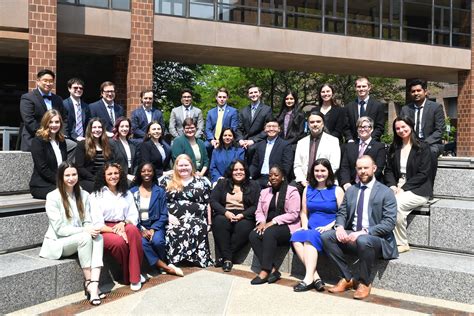
A University at Buffalo (UB) graduation ceremony devolved into disorder when a graduating student, carrying a baby, evaded police officers onstage during the event. The incident, captured on video and widely circulated online, showed the graduate being pursued by law enforcement before eventually exiting the stage.
The unexpected disruption occurred during the commencement exercises, prompting immediate reactions from attendees and raising questions about the circumstances leading to the confrontation. While details surrounding the student’s actions remain unclear, the university has acknowledged the incident and is reportedly reviewing the situation. The video footage shows a woman dressed in graduation regalia walking across the stage carrying an infant. As she approaches the university official, she appears to bypass the handshake, continuing across the stage. Security personnel then approach her, and she begins to move more quickly, eventually walking off the stage with security following. The reason for the police involvement and the student’s apparent attempt to avoid them remain under investigation.
The incident sparked a range of reactions online, with some expressing concern for the child’s safety and others questioning the appropriateness of the university’s response. The University at Buffalo has yet to release an official statement detailing the precise reasons for the confrontation.
Further Details of the Incident
The graduation ceremony, a significant milestone for graduating students and their families, took an unexpected turn when the female graduate, whose identity has not been officially released, walked onto the stage. According to witnesses and video evidence, the student, while holding a baby, did not stop to greet university officials or receive her diploma cover as is customary. Instead, she continued moving across the stage, prompting security personnel to approach her.
The video shows the student increasing her pace as the security officers neared, creating a brief pursuit across the stage. Ultimately, she exited the stage on her own accord, with the officers following closely behind. It is important to note that the video clips available do not clearly show any physical contact between the student, the baby, and the security personnel. The specific reasons for the security response are still unconfirmed, pending official statements from the university.
The incident unfolded in front of a large audience of graduates, faculty, and family members. The abruptness of the situation and the visible presence of law enforcement created a palpable sense of confusion and unease. Many attendees began recording the events on their phones, quickly disseminating the videos across various social media platforms.
University Response and Investigation
In the wake of the incident, the University at Buffalo has acknowledged the event and indicated that it is currently under review. A university spokesperson stated that they are aware of the situation and are gathering information to understand the full context of what transpired.
“We are aware of the incident that occurred during the graduation ceremony and are currently reviewing the matter,” the spokesperson said.
The university’s investigation aims to determine the specific reasons for the student’s behavior and the subsequent response from security personnel. It is expected that the investigation will involve reviewing security footage, interviewing witnesses, and speaking with the student involved. The findings of the investigation will likely inform any further actions taken by the university.
While the university has not yet provided specific details regarding the reasons for the confrontation, it is understood that the primary concern is ensuring the safety and security of all attendees at university events. The university’s policies regarding conduct during ceremonies will likely be a key part of the investigation.
Social Media Reactions and Public Discourse
The video of the incident quickly went viral, generating a wide range of reactions across social media platforms. Many users expressed concern for the well-being of the baby, questioning the safety of bringing an infant into a potentially confrontational situation.
Others criticized the university’s response, arguing that the security personnel’s actions appeared heavy-handed and potentially intimidating. Some commenters suggested that the situation could have been handled more discreetly and with greater sensitivity, especially given the presence of a child.
Conversely, some social media users defended the university’s actions, arguing that security personnel were justified in responding to what they perceived as a breach of protocol or a potential security threat. These commenters emphasized the importance of maintaining order and safety during large public events.
The incident also sparked broader discussions about the relationship between law enforcement and students, particularly in the context of university campuses. Some commentators argued that the incident highlighted the need for greater understanding and de-escalation tactics in interactions between security personnel and students.
Potential Contributing Factors and Context
While the precise reasons for the student’s actions and the university’s response remain under investigation, several potential contributing factors could shed light on the situation.
One possibility is that the student was attempting to make a statement or protest during the graduation ceremony. Graduation ceremonies have historically been used as platforms for students to express their views on various social and political issues. It is conceivable that the student’s actions were intended to draw attention to a particular cause or grievance.
Another possibility is that the student may have had a prior disagreement or conflict with university officials, leading to the confrontation on stage. It is also possible that the student was simply attempting to avoid the traditional handshake or greeting for personal reasons.
It is important to note that these are just speculative possibilities, and the true reasons for the incident may only become clear after the university completes its investigation and releases its findings.
Legal and Ethical Considerations
The incident also raises several legal and ethical considerations. From a legal standpoint, the university has a responsibility to ensure the safety and security of all attendees at its events. This includes the right to maintain order and to remove individuals who pose a threat to others.
However, the university also has a responsibility to respect the rights of its students and to avoid using excessive force or engaging in discriminatory practices. The use of security personnel to pursue the student on stage raises questions about whether the university’s response was proportionate to the perceived threat.
From an ethical standpoint, the incident raises questions about the university’s duty to protect the well-being of the child involved. The presence of the baby in a potentially confrontational situation raises concerns about the potential for emotional distress or physical harm.
Impact on Future Graduation Ceremonies
The incident at the University at Buffalo is likely to have an impact on future graduation ceremonies at the university and potentially at other institutions as well. Universities may need to review their security protocols and procedures to ensure that they are effective in maintaining order while also respecting the rights of students.
Universities may also need to provide additional training to security personnel on de-escalation tactics and on how to interact with students in a sensitive and respectful manner. In addition, universities may need to develop clearer policies regarding acceptable conduct during graduation ceremonies to avoid misunderstandings and potential conflicts.
The incident serves as a reminder of the importance of communication and collaboration between universities, students, and security personnel to ensure that graduation ceremonies are safe, respectful, and memorable occasions for all involved.
Experts’ Opinions
Several experts in university administration and security have weighed in on the incident, offering their perspectives on the situation.
Dr. Emily Carter, a professor of higher education administration at a leading university, stated, “Universities must strike a delicate balance between maintaining order and respecting students’ rights to expression. This incident highlights the need for clear protocols and de-escalation training for security personnel.”
John Thompson, a security consultant specializing in campus safety, added, “While universities have a responsibility to ensure the safety of their events, the response in this case appears to be disproportionate. A more measured approach, focusing on communication and de-escalation, would have been more appropriate.”
These expert opinions underscore the complexities involved in managing security at large public events and the importance of adopting a balanced and nuanced approach.
FAQ Section
Q1: What exactly happened at the University at Buffalo graduation ceremony?
A1: A graduating student, while carrying a baby, appeared to evade police officers onstage during the commencement ceremony. Video footage shows the student walking across the stage, bypassing the customary handshake, and then being approached by security personnel. The student then quickened their pace, walked off the stage, with security following. The reasons for the interaction are currently under investigation.
Q2: Why was the student being pursued by security?
A2: The precise reasons for the security response are still unconfirmed and are currently under investigation by the University at Buffalo. Initial reports and video footage suggest that the student did not follow the customary procedures for receiving her diploma cover and appeared to be avoiding university officials. The university has not yet released an official statement detailing the specific reasons for the confrontation.
Q3: What has been the University at Buffalo’s response to the incident?
A3: The University at Buffalo has acknowledged the incident and stated that it is currently under review. A university spokesperson stated that they are aware of the situation and are gathering information to understand the full context of what transpired. The university’s investigation aims to determine the specific reasons for the student’s behavior and the subsequent response from security personnel.
Q4: What were the reactions to the incident on social media?
A4: The video of the incident quickly went viral, generating a wide range of reactions across social media platforms. Many users expressed concern for the well-being of the baby, while others criticized the university’s response, arguing that it appeared heavy-handed. Some commenters defended the university’s actions, emphasizing the importance of maintaining order and safety during large public events. The incident also sparked broader discussions about the relationship between law enforcement and students on university campuses.
Q5: What are some potential contributing factors to the incident?
A5: While the precise reasons for the student’s actions and the university’s response remain under investigation, several potential contributing factors could shed light on the situation. One possibility is that the student was attempting to make a statement or protest during the graduation ceremony. Another possibility is that the student may have had a prior disagreement or conflict with university officials. It is also possible that the student was simply attempting to avoid the traditional handshake or greeting for personal reasons. These are just speculative possibilities, and the true reasons for the incident may only become clear after the university completes its investigation.
In-Depth Analysis of the Incident
The University at Buffalo graduation incident serves as a focal point for several critical issues in modern university settings, including security protocols, student expression, and the management of public events. A deeper analysis of each element can reveal the complexity of such situations and the lessons that can be learned.
Security Protocols and De-escalation Tactics: Universities are responsible for ensuring the safety and security of all individuals present on their campuses, especially during large-scale events such as graduation ceremonies. This responsibility necessitates having security protocols in place that can effectively manage potential disruptions or threats. However, the implementation of these protocols must be carefully balanced against the rights and well-being of students and other attendees.
The incident at UB raises questions about whether the security response was proportionate to the situation. The video footage shows security personnel pursuing the student across the stage, which some observers have characterized as an overly aggressive response. Experts in university administration and security have suggested that a more measured approach, focusing on communication and de-escalation, would have been more appropriate.
De-escalation tactics involve using verbal and non-verbal communication techniques to defuse tense situations and avoid the use of force. These tactics can be particularly effective in dealing with individuals who may be experiencing emotional distress or who may not be fully aware of the consequences of their actions. By prioritizing de-escalation, universities can minimize the risk of escalating minor incidents into major confrontations.
Student Expression and Freedom of Speech:
Graduation ceremonies have historically been used as platforms for students to express their views on various social and political issues. Students may choose to make statements through their speeches, attire, or other forms of symbolic expression. Universities generally recognize and protect students’ rights to freedom of speech, but these rights are not absolute. Universities can impose reasonable restrictions on student expression to maintain order and prevent disruptions to university events.
In the UB incident, it is possible that the student was attempting to make a statement or protest during the graduation ceremony. If this was the case, the university’s response raises questions about whether it unduly restricted the student’s right to express herself. The university’s investigation should consider whether the student’s actions posed a legitimate threat to the safety or order of the ceremony, or whether they were simply an attempt to express a particular viewpoint.
Management of Public Events:
Managing large public events such as graduation ceremonies requires careful planning and coordination. Universities must develop comprehensive plans that address security, crowd control, emergency response, and other logistical considerations. These plans should be regularly reviewed and updated to ensure that they are effective and responsive to changing circumstances.
The UB incident highlights the importance of having clear communication protocols in place to ensure that all personnel involved in managing the event are aware of their roles and responsibilities. It is also important to have contingency plans in place to address unexpected situations or disruptions.
The Role of Social Media:
The rapid dissemination of video footage of the UB incident on social media underscores the significant role that these platforms play in shaping public perceptions of university events. Social media can amplify both positive and negative aspects of these events and can quickly create a narrative that may not accurately reflect the full context of what transpired.
Universities must be aware of the potential impact of social media and should develop strategies for managing their online presence and responding to public inquiries. This includes proactively sharing accurate information about university events and addressing any misinformation or misrepresentations that may circulate on social media.
Lessons Learned and Recommendations:
The University at Buffalo graduation incident offers several important lessons for universities seeking to improve their security protocols, manage public events, and protect student rights.
-
Prioritize De-escalation: Universities should invest in training for security personnel on de-escalation tactics and communication skills. This training should emphasize the importance of using verbal and non-verbal communication techniques to defuse tense situations and avoid the use of force.
-
Develop Clear Communication Protocols: Universities should establish clear communication protocols to ensure that all personnel involved in managing public events are aware of their roles and responsibilities. This includes establishing channels for reporting potential security threats and coordinating responses to emergency situations.
-
Review and Update Security Plans: Universities should regularly review and update their security plans to ensure that they are effective and responsive to changing circumstances. This includes conducting risk assessments, identifying potential vulnerabilities, and developing contingency plans to address unexpected situations.
-
Protect Student Rights: Universities should respect students’ rights to freedom of speech and expression, while also maintaining order and preventing disruptions to university events. This requires striking a delicate balance between competing interests and ensuring that any restrictions on student expression are reasonable and narrowly tailored to serve a legitimate purpose.
-
Manage Social Media Presence: Universities should develop strategies for managing their online presence and responding to public inquiries on social media. This includes proactively sharing accurate information about university events and addressing any misinformation or misrepresentations that may circulate online.
Moving Forward
The incident at the University at Buffalo serves as a case study for universities worldwide, demonstrating the need for meticulous planning, thoughtful execution, and a commitment to balancing security with student rights. The comprehensive investigation currently underway is crucial for uncovering the full scope of the events and developing informed strategies for the future.
By embracing transparency, fostering open dialogue with students and the broader community, and implementing the recommendations outlined above, the University at Buffalo can ensure that its graduation ceremonies remain safe, respectful, and memorable occasions for all involved.









